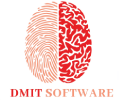Unlocking Your Potential How DMIT Can Help in Choosing the Right College Course
Choosing a college course or career path is one of the most pivotal decisions in a student’s life. With an abundance of options and increasing pressure to make “the right choice,” it’s easy to feel overwhelmed. Enter the Dermatoglyphics Multiple Intelligence Test (DMIT): a revolutionary tool that offers personalized career guidance by unlocking an individual’s innate talents and learning styles.
This blog will help you understand what DMIT is, how it works, and its potential to transform college course selection into a more informed, customized, and confident process.
What Is DMIT and How Does It Relate to Career Selection
DMIT, or the Dermatoglyphics Multiple Intelligence Test, is a scientific assessment that uses fingerprint analysis to uncover an individual’s genetic intelligence and personality traits. Though fingerprint patterns are often associated with forensics, the science behind DMIT is rooted in dermatoglyphics, neurology, and multiple intelligence theory.
The goal of DMIT is simple yet profound—to assess your inborn talents, academic strengths, and learning styles. It provides insights into various aspects of your personality, helping students identify suitable career paths and select ideal college courses.
DMIT is especially relevant for students facing crossroads, like stream selection after 12th grade or deciding between diverse college courses.
The Science Behind DMIT
You might wonder how fingerprints correlate to intelligence or inborn talents. Here’s a breakdown of the science behind DMIT:
Dermatoglyphics
Dermatoglyphics is the scientific study of fingerprint and neural connections. Research shows that our fingerprint patterns are linked to brain development, forming a map of neural pathways that influence learning capability, cognitive style, and personality.
Multiple Intelligences
DMIT embodies Dr. Howard Gardner’s theory of multiple intelligences, which suggests intelligence is not one-dimensional. DMIT explores areas like linguistic, logical-mathematical, spatial, musical, interpersonal, and intrapersonal intelligences.
Practical Applications
Fingerprint analysis generates a detailed report about an individual’s brain hemisphere dominance, learning patterns, and personality traits. Armed with this information, students can better understand themselves and optimize their career decisions.
How DMIT Helps Identify Strengths and Weaknesses
DMIT provides a clear picture of your strengths and weaknesses by analyzing your learning styles, cognitive abilities, and personality. This nuanced understanding can be a game-changer in academic and career planning.
Key Insights Offered by DMIT
- Cognitive Skills: Identify aptitudes such as problem-solving, logical reasoning, and creativity.
- Learning Style: Understand how you learn best, whether it’s visual, auditory, or kinesthetic.
- Personality Analysis: Discover whether you thrive in structured environments or prefer flexibility.
- Multiple Intelligences: Uncover your strongest forms of intelligence for skill-oriented course decisions.
Sample Analysis in Table Format
| Traits | Strength Example | Weakness Example |
|---|---|---|
| Logical Intelligence | Excels in math and data analysis | Struggles in creative composition |
| Musical Intelligence | Strong ability to identify rhythms | Limited in logical problem-solving |
| Visual Intelligence | Quick to grasp design and architecture | Organizing data can be challenging |
| Language Intelligence | Skilled in writing and public speaking | May dislike numerical analysis tasks |
With these insights, DMIT sets the foundation for more objective decisions, allowing students to identify academic strengths and areas needing improvement.
Matching DMIT Results with College Courses
Once you receive your DMIT report, the next step is aligning the results with suitable college courses. Here’s how DMIT makes this easier for students and parents alike.
Example Process to Match College Courses
- Logical-Mathematical Intelligence
Pathway Example: Engineering, finance, data science
- Linguistic Intelligence
Pathway Example: Media and journalism, law, teaching
- Interpersonal Intelligence
Pathway Example: Human resources, public relations, social work
- Musical Intelligence
Pathway Example: Music composition, sound engineering
DMIT can also aid in stream selection after 12th grade by identifying which subjects align naturally with a student’s abilities and interests. For instance, a student with high interpersonal intelligence might gravitate toward humanities and social sciences.
Success Stories of Students Using DMIT
Here are some real-world examples of students who benefited from DMIT and made informed academic decisions based on their reports.
- Aditi, 17
Faced with the dilemma of choosing between medicine and law, Aditi used DMIT to uncover her dominant linguistic intelligence and a unique strength for persuasion. Today, she’s thriving in a pre-law college program.
- Rohan, 19
Struggling to pick a specialized field within engineering, Rohan took a DMIT test and discovered his innate logical-mathematical intelligence. Guided by his report, he pursued data science and landed an internship straight out of college.
These success stories underscore the practical and transformational value of DMIT for young individuals at academic crossroads.
Addressing Common Misconceptions About DMIT
While DMIT has gained attention for its innovative approach to career counseling, some myths and misconceptions persist. Here’s the truth behind them.
Myth 1 DMIT Labels Intelligence as Fixed
Reality DMIT doesn’t measure fixed IQ. It focuses on identifying innate potential and helps individuals capitalize on it.
Myth 2 DMIT Replaces Career Counselors
Reality DMIT is a tool that complements traditional career counseling, providing additional clarity and focus.
Myth 3 DMIT Is Unreliable
Reality DMIT is based on proven scientific principles, including fingerprints and neurology. However, the reliability depends on the quality of the service provider.
Empower Your Career Decisions with DMIT
Choosing the right college course is not just about following trends or social pressure; it’s about aligning your choices with who you are at your core. DMIT makes this alignment possible by giving you a roadmap to understand your talents, strengths, and preferences.
By combining scientific insight with personalized career guidance, DMIT not only takes the guesswork out of stream selection after 12th grade but also empowers students and their families to make informed academic and career decisions.
If you’ve been searching for clarity and confidence in your career path, why not explore DMIT for yourself? A brighter, more informed future is just a fingerprint analysis away!
